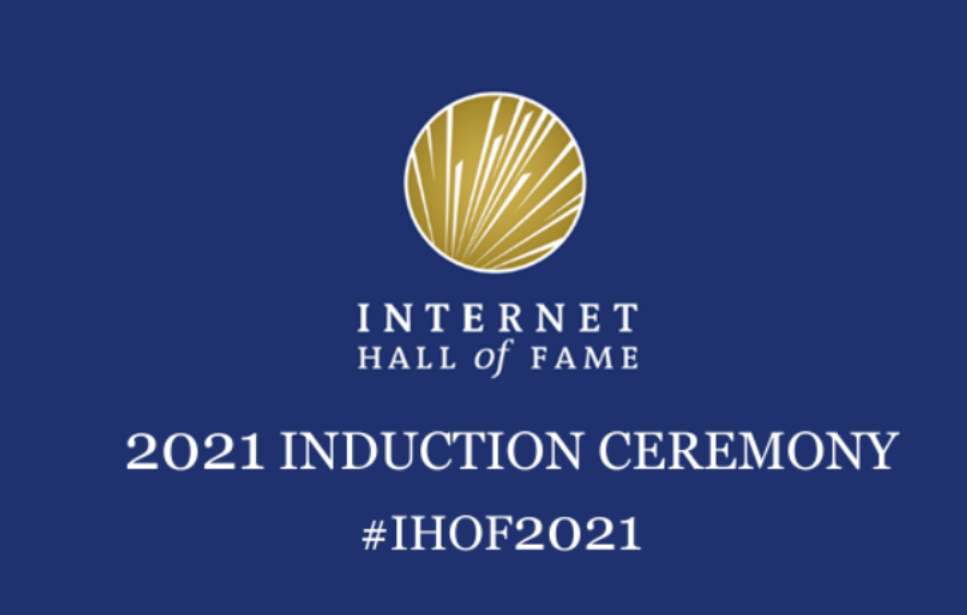These engineers, physicists, mathematicians, academics, and others from 11 nations made outstanding contributions to the Internet’s global growth, inventing the technologies that launched it, expanding its reach in their own regions and worldwide, and making it more secure, reliable, and accessible for millions.

The Internet they helped create brought the new cohort together in a virtual induction ceremony 14 December 2021. They logged on from points around the world to share the honor with their colleagues, about whom Internet Society President, Andrew Sullivan, noted: “Their contributions made it possible for us to look forward to our future, inextricably tied to the open, globally-connected, secure, and trustworthy Internet, and its ability to connect us reliably and consistently.”
The 2021 Inductees are:
Carlos Afonso (Brazil/Canada) advanced Internet development and democratized access in Brazil and beyond through his role as a founder and leader of several key organizations, including the Association for Progressive Communications.
Dr. Robert “Rob” Blokzijl (The Netherlands) played a significant role in advancing Internet development and use in Europe, the Middle East, and Central Asia as a founder and leader of Réseaux IP Européens (RIPE) and RIPE NCC, and as a contributor to other influential international networking organizations.
Hans-Werner Braun (United States) was instrumental in the design, development, and operation of the National Science Foundation Network, NSFNET, and the network’s subsequent growth in speed, coverage and reliability, which served as a model for Internet networks around the world and paved the way for large-scale routing.
Frode Greisen (Denmark) helped found the European Internet backbone EBONE, considered Europe’s original Internet, and played an important role in the expansion of the network across Western and Eastern Europe, North Africa, and Iran.
Jan Gruntorad (Czech Republic) was an early champion of international networking for research and development in Czechoslovakia, initiating the country’s connection to the European Academic and Research Network (EARN) in the first half of 1990 and, shortly after, establishing CESNET, the Czech Education and Scientific Network.
Dr. Saul Hahn (United States) was instrumental in connecting many Caribbean and several Latin American countries to the Internet.
Kim Hubbard’s (United States) creation and stewardship of a fair and sustainable system for allocating IP addresses helped fundamentally safeguard the Internet’s development as a member-driven, self-governing network.
Rafael “Lito” Ibarra (El Salvador) connected El Salvador to the Internet and worked to improve early systems for access nationwide.
Dan Kaminsky (United States) fostered the adoption of a more secure Domain Naming System (DNS) through his 2008 discovery and repair of a critical flaw in the Internet, now known as the Kaminsky Bug.
DaeYoung Kim (South Korea) played a key role in advancing Asia-Pacific regional network infrastructure and created many of the techniques required to share compressed and uncompressed video online.
Kenneth J. Klingenstein (United States) helped lead the expansion of the Internet in the American West and played an early and important role in the development of the Internet’s identity and trust layers.
Dr. Xing Li (China) pioneered Internet development in China, beginning with his work in the 1990s to connect Chinese academic and research institutions and continuing with his contributions to IPv6 development and deployment in that country and worldwide.
Yngvar G. Lundh (Norway) advanced the Internet in Europe by connecting networks between the Norwegian and U.S. defense departments, helping found the first ARPANET connection outside the U.S., in Norway, and helping secure .no as the first domain outside the U.S.
Alejandro Pisanty (Mexico) played a significant role in influencing policy to support the growth and improvement of the Internet in Mexico and throughout Latin America.
Yakov Rekhter (United States) helped develop the first Border Gateway Protocol (BGP), a technology essential to scaling the Internet, and played a key role in evolving BGP through subsequent versions.
Philip Smith (Australia) advanced the growth of the Internet in the Asia- Pacific region, Africa, and the Middle East through his leadership roles in influential network organizations and his help codifying best practices for engineering processes and protocols especially Border Gateway Protocols (BGP).
Pål Spilling (Norway) was a key contributor to the establishment of the first ARPANET node outside the United States in 1973, and then helped extend that connection to a second overseas node, paving the way for a global network.
Liane Tarouco (Brazil) played a key role in the design and implementation of Brazil’s first Internet backbone and helped educate a generation of engineers and network specialists in Brazil and beyond.
Virginia Strazisar Travers (United States) designed and wrote the software that created Internet gateways, the precursor to routers and the core component that allows dissimilar networks to connect.
George Varghese (United States) made significant contributions to the usability of the Internet by inventing algorithms that increase its speed, chronicling these concepts in the 2004 field-defining textbook, “Network Algorithmics: An Interdisciplinary Approach to Designing Fast Networked Devices.”
Dr. Lixia Zhang’s (United States) design of the highly influential Resource Reservation Protocol (RSVP), which has served as the foundation of Internet Traffic Engineering by most major network operators, has helped enable the effective management and growth of the Internet’s backbone networks for over two decades.
More details on the 2021 cohort, including complete biographies and photos, can be found at www.internethalloffame.org.